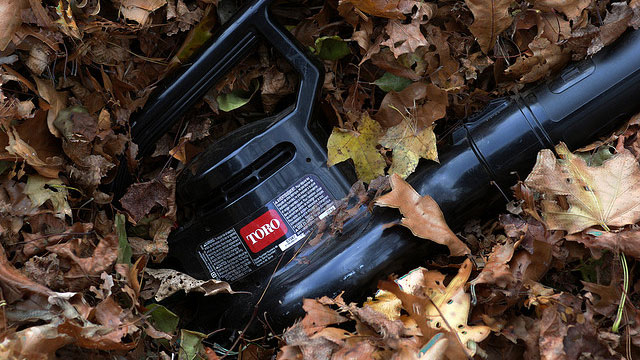Good sleep really matters, but even if you have what it takes to get a good night’s rest you still have to combat the world around you. You can’t control the sun or the noise outside, but you can do a few things to make your bedroom dark and quiet when you need it so nothing stands between you and a good night’s rest.
Photo by James Steidl (Shutterstock), Serg64 (Shutterstock), oilyy (Shutterstock), and Ian Murphy
The sun rises right into my face every morning at 7:00 AM, and I don’t need or want to get up quite so early. (Sorry, 7:00 AM is not early — Lifehacker Australia editor.) On top of that, the leaf blowers and music in my neighbourhood get their start at about the same time. Since I’m not Helen Keller, this sort of thing wakes me up in the morning before I’m ready to go. Going to bed early can help, but not all nights were created equal and I wanted a way to survive the distractions. A few DIY tips and tricks made all the difference without much sacrifice.
Dim Your Windows

You may have noticed, but most blinds only keep out the sun so much. If you’ve got a lot of natural light in your bedroom as I do, you’ve probably considered expensive blackout shades but didn’t want to pay the price. Additionally, if you actually like the light in your room at other times of the day, blackout shades only give you two options: really dark or really bright. I’ve found a good solution to each problem, and you can even combine them if you want.
First, you can dim your windows with cut-to-size removable decals. I purchased this Gila Privacy Film, which costs about $17 per window (not much for just a bedroom), but pretty much any generic removable dimming film should do the trick. You just cut it to size, wash your window, and roll it on.
You have to take time to press it so it stays, and if you have multiple window panes you’ll need to cut it into multiple pieces. I have 24 separate panes on one window and cutting took about an hour. I caught up with some podcasts. You’ll probably have an easier time than I did, however, so I wouldn’t worry too much about the commitment. Speaking of commitment, you can also take the film off at any time if you like. I taped mine in some places where it wouldn’t stick, but it should stay on the window just fine if you leave it alone.
Second, you can make your own blackout shades. I prefer just the decals because I want some light to come in. With less coming through, I wake up closer to 8:00 AM — my desired time — so I don’t employ other techniques unless I need to. If you want to make your own shades, you don’t really need a lot of know-how. You just need blackout fabric, a curtain rod, a staple gun, and a string. From there you just cut the fabric to the size of your window, staple the top around the curtain rod, mount the curtain rod above your window, and tie the fabric up into a roll with a string until you need to pull your blackout curtains down. Of course, these won’t look beautiful by any means. It’ll look like you stapled a sheet of fabric to a rod. If you have a sewing machine, however, you can sew them onto the rod and seal the corners without much effort. For some good instructions, check out DIY Network’s post on making your own blackout shades.
You can use whichever techniques suit you best, or both. You can also just buy an eye mask if you don’t mind them. Either way, you’ll reduce the amount of light in your bedroom on the cheap and worry less about an early wake-up call from the sun.
Plug Your Ears

You can block out the sun, but you can’t black out the noise. If your home lets in a lot of outdoor sound, you can’t really do anything simple to stop it. You can, however, plug up your ears.
You’ve probably thought of this. Ear plugs make for an obvious solution, but you want to get the right kind. Small foam inserts work best. You wouldn’t want them for a loud, damaging concert; you don’t need to block out a crazy amount of sound or maintain any level of quality. You just need to block out enough sound to stay asleep without causing much discomfort. You can order foam earplugs in bulk on the cheap. The simple cylindrical type tend to work best for sleep because very little protrudes. Shove in your ears at night and you’ll sleep well. A vibrating alarm will supplant your noisy clock if you need a wake-up call.
Although ear plugs can solve the noise problem, they can create issues of their own if used over longer periods of time. You need to safely clean your ears so you don’t get compacted wax issues. Also, if you toss and turn a lot at night you might want to avoid ear plugs because a quick change in pressure due to movement of the plug can cause damage to the ear drum. If you think it risky, consult your doctor or sleep specialist prior to using. Custom-moulded ear plugs usually solve problems for people with issues (and work better in general), but you’ll obviously pay quite a bit more for these. If you really don’t want to plug your ears, you can always try a little DIY soundproofing but we’ve found this barely helps with outside noise.

Comments
7 responses to “How To Transform Your Bright And Noisy Bedroom Into A Sleep Paradise”
A very cheap blackout. A roll of aluminium foil and a spray bottle of water. Spray the window all over or just where light might penetrate curtain gaps then apply sheets of the aluminium foil where you like. Whole window or just the edges.
I’ve done my whole window before and the room was blacker than the bottom of Jenolan Caves with the lights off.
There you go! I just thought our neighbours were meth cookers!
You gotta plan for the types of noise you’re trying to stop. For high fequencies, closed windows and solid doors work – I recently replaced our internal doors, which were slatted for reasons unknown to me, with solid wooden doors which work great.
If you have bass/low frequency issues, Boombuster will be the best $20 you’ll ever spend. I have a small stereo in the bedroom – if the neighbours kick off one of their World War B (bogan) parties, I set it going on loop and it does a great job drowning them out.
There’s whole articles suggesting people use curtains and ear plugs?
For some more ear plug advice, buy them on ebay. You can buy them at your local pharmacy fro $10 to $15 for a set of 3 pairs, or you can buy about 1,000 for the same price on ebay. The ones I have from ebay are much, much better than the pharmacy ones – I can’t describe how – just better material.
It is true though that for a better night (not day as per this article) sleep you should remove as much light from the equation as possible as well as any sounds. Dim your alarm clock down to its minimum useful setting (ie. sometimes the lowest dim option is just too dim), make sure phones and tablets, which might receive updates throughout the night, are face down or in a case with the screen covered completely and so on. Close blinds, close doors etc.. eliminate as much light as you can… even the LED from a charger can be quite bright..
Sound is the next thing.. electrical hums and other sounds that you don’t hear during the day or even at most of the time at night can upset sleeping too.. so turn off everything that has a transformer, everything that has a fan and so on..
At the end of each sleep cycle (45mins), apparently, you wake up for a very short time.. so if there is any light or sound, it can upset the cycle..
tracksuit type material from spotlight, really cheap and very efficient at blocking light.
Running a fan in the room is very effective at blocking outside noises. Because it is a steady noise you get used to it until it is hardly noticeable. An alternative if you don’t want to run a fan is a program like “Relax and Sleep” (https://play.google.com/store/apps/details?id=com.mizusoft.relaxandsleep&hl=en) – it even has a passable fan noise replica.
Was the HK comparison meant to be funny, witty or insightful analogy?? I suspect most Deaf-Blind people would gladly wake up early for some resoration of their sences!
Strange comment! From someone who obviously thinks they are smart!
Are there noise canceling devices for bedrooms?
That sounded way less creepy in my head.
I’ve used a wave sounds sound app on my phone / rain works ok as long as the thunder storm intencity is not set too high. With or without earphone, They can be set for time periods, so it doesn’t play all through the night, but helps you get to sleep.
I’m not keen on blocking out your awareness to the extreme of foam plug in earplugs – it’s not practical when you have family or something like a fire alert/ noises in night you should be aware of.
Also make use of your phones Do not disturb feature/ don’t keep phone in room least an email alert from random place wakes you at 3am.